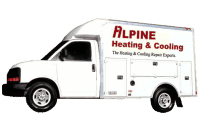What Are The Various Furnace Stages?
In this short article we will revisit furnace efficiency as it relates to different types of furnace stages. It is a known fact that modern regulations require home appliances like furnaces to be energy-efficient. They are typically measured in terms of Annual Fuel Utilization Efficiency or AFUE. This simply measures the minimum amount of fuel that is used when heating your home. Today’s modern furnaces require a minimum rating of 78% in terms of efficiency if the furnace is powered by oil. If it is a gas type furnace than it is required to have 99% efficiency.
Heat Loss Through Ducts and Leaks
These facts alone make it clear to see why replacing an older furnace can help you to save a significant amount of money on energy costs each and every month. As mentioned in a previous article in this series, this rating system does not take into account heat lost through ducts and other leaks. When a furnace is routinely maintained and inspected ducts are checked for leaks and efficiency. As a result a homeowner can save literally hundreds of dollars per year on heating costs.
Reduce The Amount of Carbon Dioxide Emissions Produced
Not only does reducing energy usage lower your monthly utility bill but it also helps to reduce the carbon footprint on the planet from an environmental standpoint. With a more efficient furnace operating in your home you can reduce the amount of carbon dioxide emissions produced. Now we will look at the different stages available when it comes to a typical residential furnace. As discussed, older furnaces are usually single stage or single speed type heating units. This simply means that the only option is either on or off.
Constantly Cycling On and Off All Day
With a single stage furnace, the system must continually cycle on and off to maintain temperature. Conversely, newer modern and more advanced furnaces that are multistage or multispeed, maintain a more steady temperature control resulting in improved efficiency. This is simply due to the fact that a multispeed furnace is not constantly cycling on and off all day. More so than a multispeed furnace, a variable speed furnace combined with a variable speed blower and a thermostat that is computer-controlled can substantially improve efficiency while maintaining more stable interior temperatures.
Properly Maintained and Inspected
The newest and latest models of variable speed furnaces are not only great when it comes to efficiency, but they are also a good choice because they are quiet and incredibly dependable. When this type of furnace is properly maintained and inspected regularly, the end result can be a system that operates flawlessly for many years. Saving money while enjoying a comfortable interior environment all year long can be as easy as choosing the right type of furnace for your home or business. Contact Alpine Heating & Cooling today for Burlington Washington and the Skagit Valley HVAC services that get results.
Click here to return to the Furnace Buying Guide for Skagit Valley


